2014 Year in Review: New challenges at the Court of Appeals
By: WISCONSIN LAW JOURNAL STAFF//February 2, 2015//
2014 Year in Review: New challenges at the Court of Appeals
By: WISCONSIN LAW JOURNAL STAFF//February 2, 2015//
EDITOR’S NOTE: Below is a fully updated version of the state Supreme Court chart. Our initial version, which ran in the February 2015 print edition of Wisconsin Law Journal, used an incorrect methodology that did not take into account that a Supreme Court ruling that reverses a Court of Appeals decision could either affirm or reverse the initial decision made by a circuit court judge. We regret the errors and will publish the corrected chart in our March 2015 print edition, as well.
Judges grapple with technology concerns, case law
By Justin Kern
and Jessica Stephen
Special to Wisconsin Law Journal
The Wisconsin Court of Appeals issued 1,015 decisions in 2014, upholding about 83 percent of the cases from circuit courts, the same as the year prior.
In all types of cases, Milwaukee County had the highest rate, 86 percent, of circuit judges whose cases were upheld in 2014. The Court of Appeals reversed just 46 cases from Milwaukee’s circuit judges. The next closest was District 2, which includes Waukesha County and a portion of the counties that border Lake Michigan.
Judges unhappy with overturned decisions typically do not let their colleagues on the appellate bench know, said Judge Brian Blanchard, of the District 4 Court of Appeals, which includes Dane County.
“I think that it could get complicated for an appellate judge and a circuit judge to communicate about a case in which both have had an adjudicative role,” he said. “In my experience, it is rare to get any feedback at all.”
Read on for more of what judges saw in 2014 and what they predict for 2015.
Judge Pat Curley,
District 1 Court of Appeals
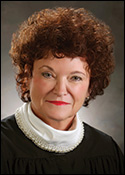
District 1 Court of Appeals
In the coming year, Curley said, she expects courts to more frequently be asked, “Who is a verifiable expert?” as Wisconsin tries to meet standards for witness testimony established under Daubert.
The standard was adopted almost four years ago in Wisconsin, but the range of decisions since then reflects no clear answer on who or what constitutes scientific input.
“This gets really fuzzy,” Curley said, “because, say, in a termination of parental rights case, you have a social worker get up on the stand … and now there’s a question of the scientific evidence that backs up what they’re saying. It requires the state to provide validity to what is being said by experts.
“For expert testimony, it used to be pretty wide open in Wisconsin.”
Curley also said she anticipates the number of appeals heard before a judge or jury to continue to slowly decline as many litigants opt for arbitration or mediation.
Of appeals that get to the courtroom, she said, she anticipates more criminal proceedings, with an emphasis on pro se appeals.
Chief Judge Richard Brown,
District 2 Court of Appeals

District 2 Court of Appeals
After 37 years on the bench, Brown said, he saw a clear drop in 2014 in the number of civil cases presented to his district.
“But the cases we do get are very complex, and the issues are thorny,” he said. “We spend a lot of time on those cases because we have to find out what the law is and we do our own research.”
More cut-and-dried matters are being winnowed out earlier in the judicial process, Brown said, partly because of cost concerns over lengthy court battles.
“The parties are risk-averse,” he said. “They don’t want to lay out money and risk losing.
“I think most of the cases where the issues are not complex, it’s just a question of money: How much is one party willing to pay to settle?”
There also is an increasing number of commercial agreements, Brown said, that include arbitration or mediation clauses, which prohibit parties from going to court.
Another standout in 2014, Brown said, was the number of environmental appeals.
“It’s pollution exclusion, seeping manure, those kinds of things,” he said. “I thought maybe that would tail off now that the Supreme Court has pronounced the law on certain subject matters … But I don’t think the law is quite settled yet, so we’re still seeing those cases.
“And I think it’s going to be awhile before the law is settled.”
Deputy Chief Judge Michael Hoover,
District 3 Court of Appeals
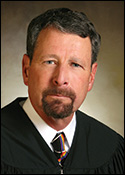
Foreclosures again were a notable part of Hoover’s work in 2014, he said.
“In mortgage foreclosures, there have been quite a few hearsay challenges to documents lenders have relied on in seeking summary judgment,” he said, “and standing challenges based on issues concerning transfers of the underlying note.”
The reason isn’t clear, Hoover said, but he has a theory.
“I’m guessing that an argument made its way onto the Internet and has been seized upon by people facing foreclosure,” he said. “But that’s just a guess.”
The court also began to see responses to Missouri v. McNeely, a 2013 U.S. Supreme Court ruling that police officers typically must try to get a warrant to test drunken-driving suspects.
“It just kind of muddied the waters,” Hoover said, “by saying the dissipation of [alcohol] in the blood is not necessarily an exigent circumstance, which turned Wisconsin law on its head.”
Judge Brian Blanchard,
District 4 Court of Appeals
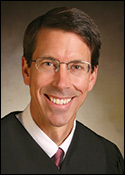
District 4 Court of Appeals
Blanchard said courts are now at the front line of privacy battles and digital law expectations created by the explosion of consumer technology.
Rules for e-discovery will continue to be refined, he said, as more digital evidence is used, though he noted there is still plenty of “digging in boxes” at the appeals level. But e-filing at the circuit court level is forcing the Court of Appeals to rely more on data, devices and computers, he said.
As more modern techniques become commonplace, Blanchard said, “we should be headed to a situation where there’s not a lot of technological knowledge needed.”
Appeals involving the “moving target” of capabilities for monitoring, tracking and security afforded by digital tools will stress the courts’ ability to keep up, he said. And the larger questions about tech’s relationship with the Fourth Amendment should continue to proceed to the U.S. Supreme Court, Blanchard said.
How circuit court judges fared at the state
Supreme Court in 2014
- A-K
- M-Z
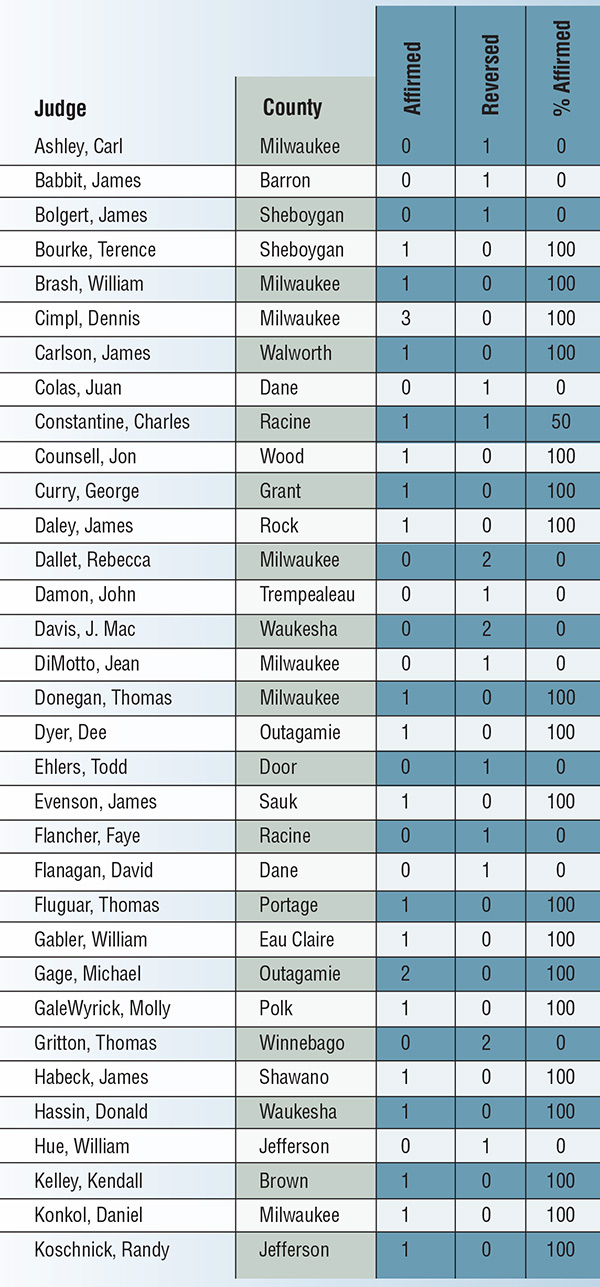
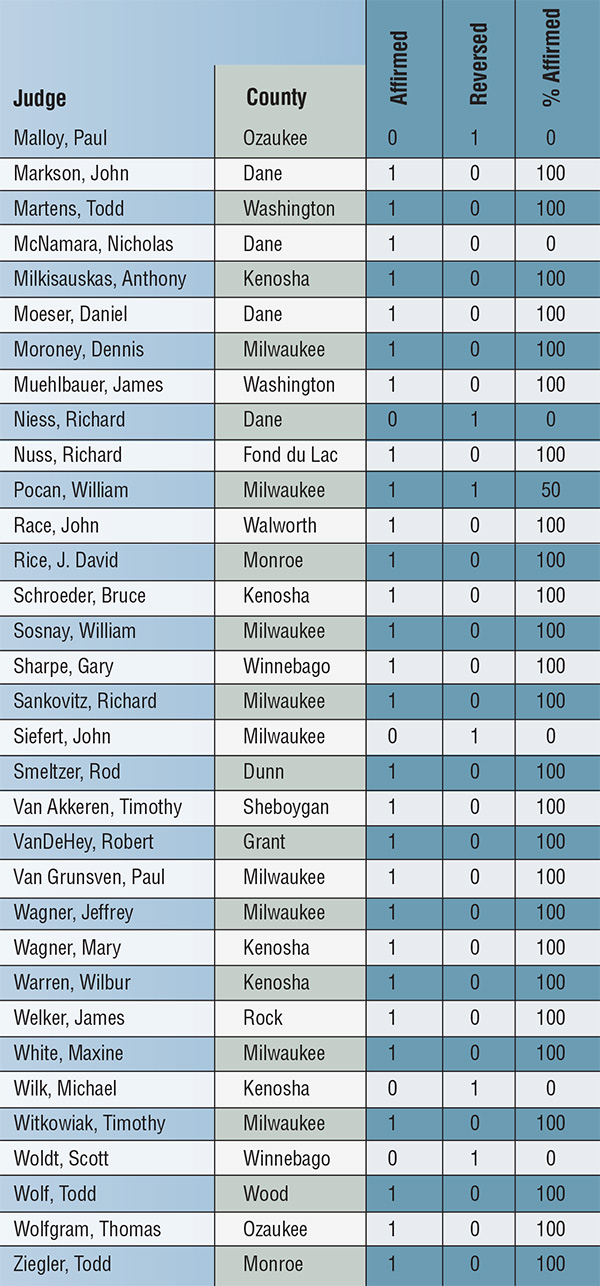
How circuit court judges fared at the state
Court of Appeals in 2014
A note on methodology:
Only full decisions, not summary decisions, by the Wisconsin Court of Appeals included on the Wisconsin Court System’s website were counted in the compilation of data. Despite efforts to avoid errors, a judge could be listed in the decision as the presiding judge being reversed, even if he or she merely entered an order consistent with the law of the case as established by another judge.
A judge could be reversed in the Court of Appeals and ultimately be affirmed at the state Supreme Court, but the earlier reversal would nevertheless remain counted as a reversal in the Court of Appeals.
It also is important to note that as the law changes, so can a judge’s holding. At the time it was issued, a judge’s holding could be entirely consistent with binding precedent and later be reversed only because a subsequent decision changed the law.
- A-B
- B-C
- C-D
- D-G
- G-H
- I-M
- M-P
- P-S
- S-W
- W-Z
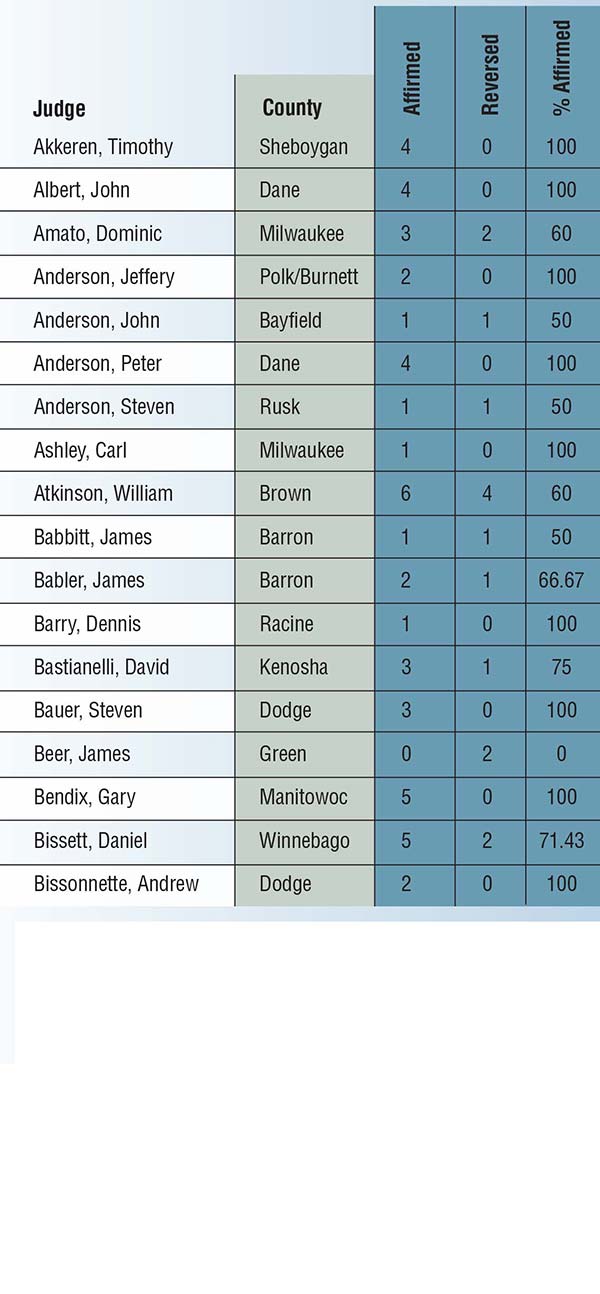

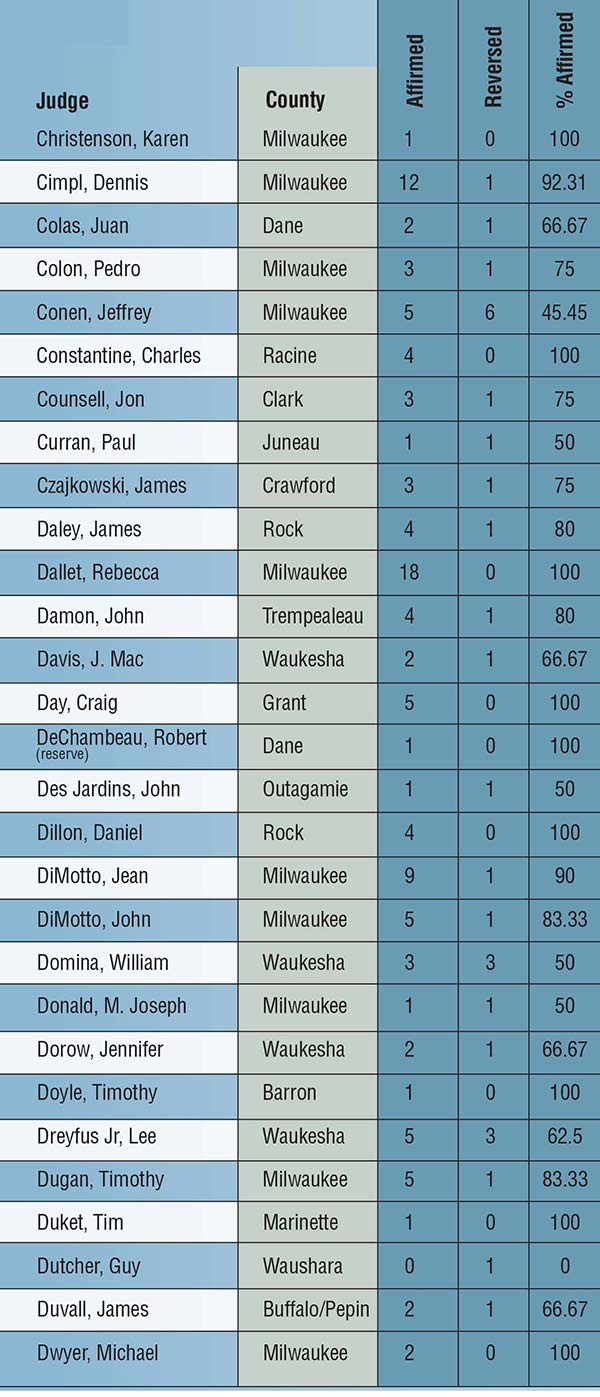
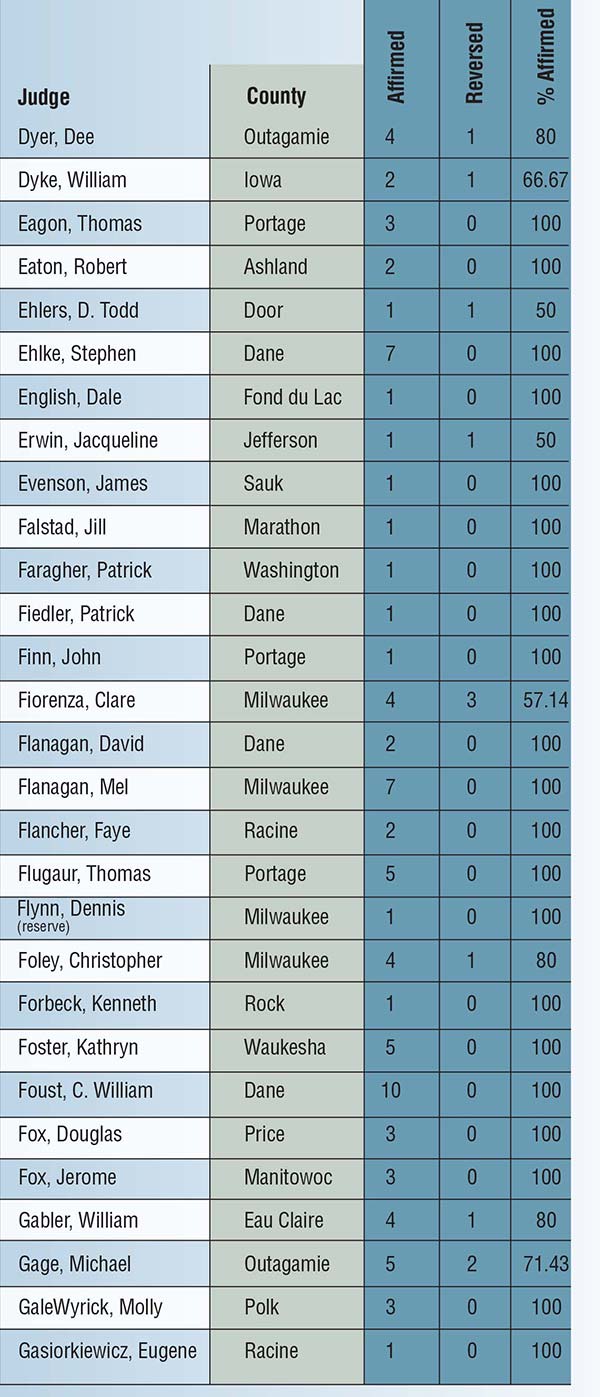
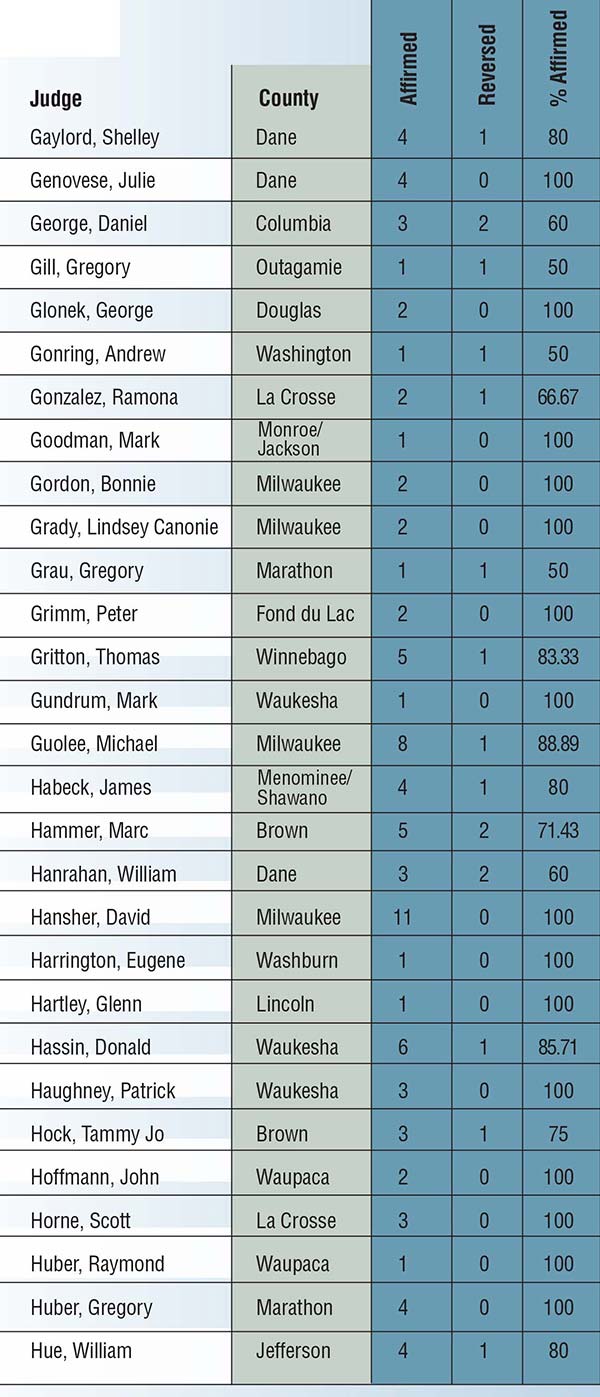
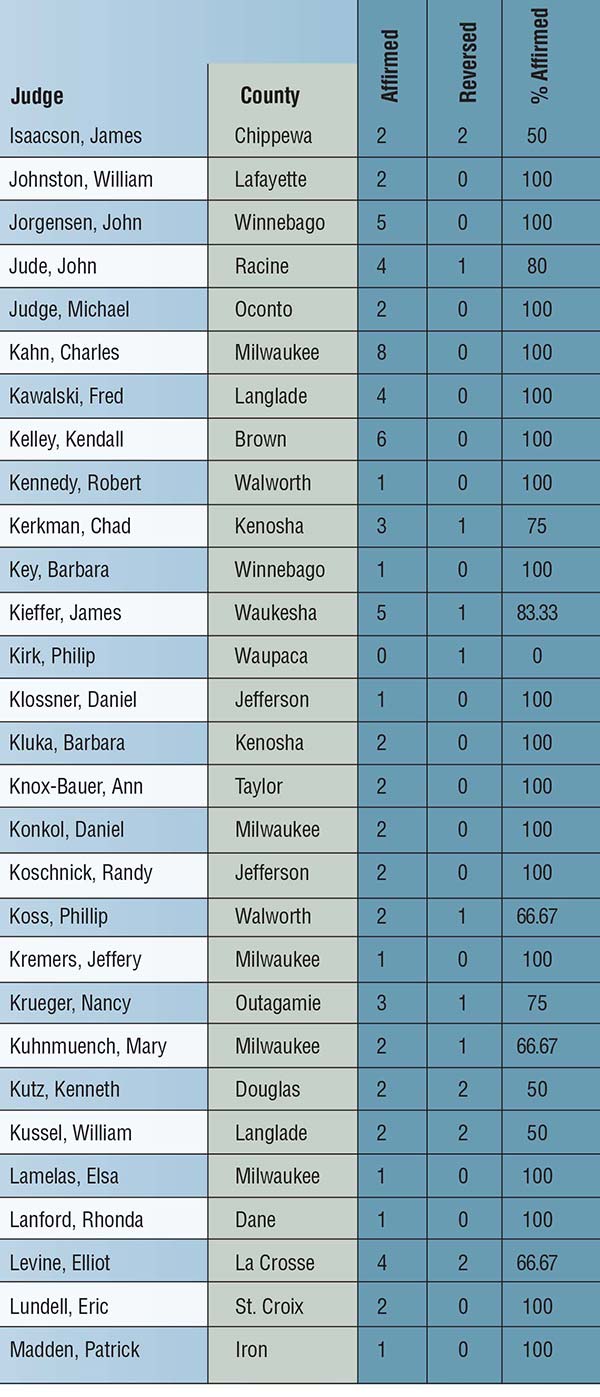
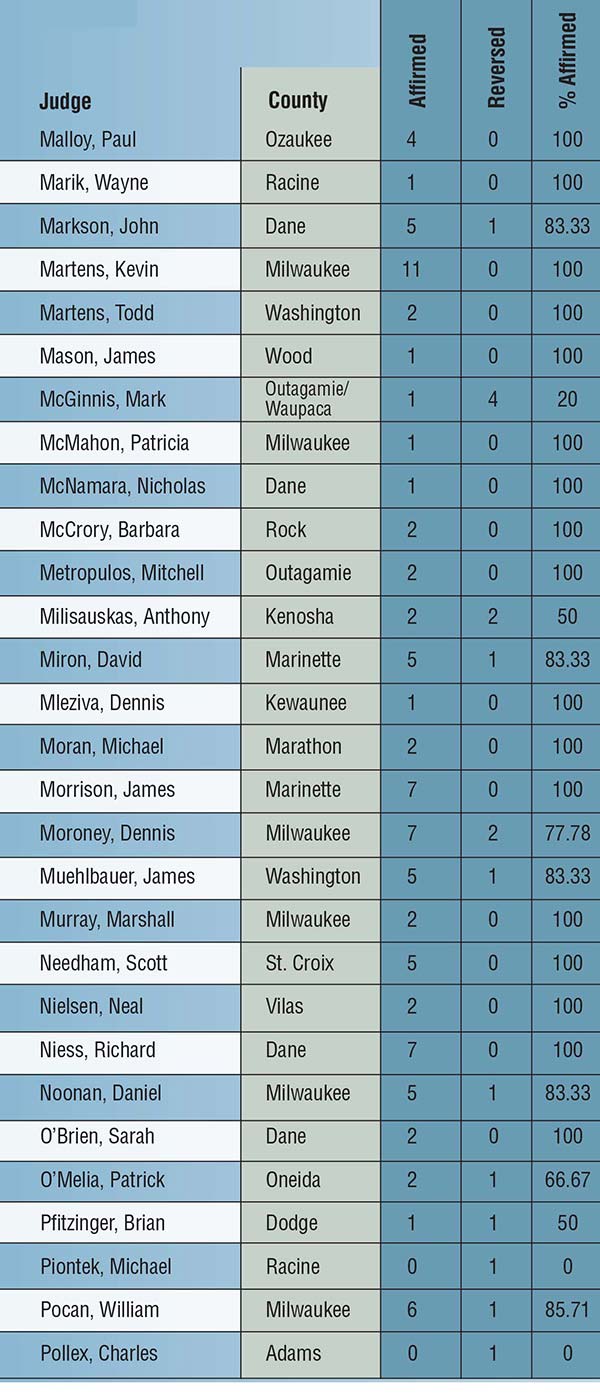
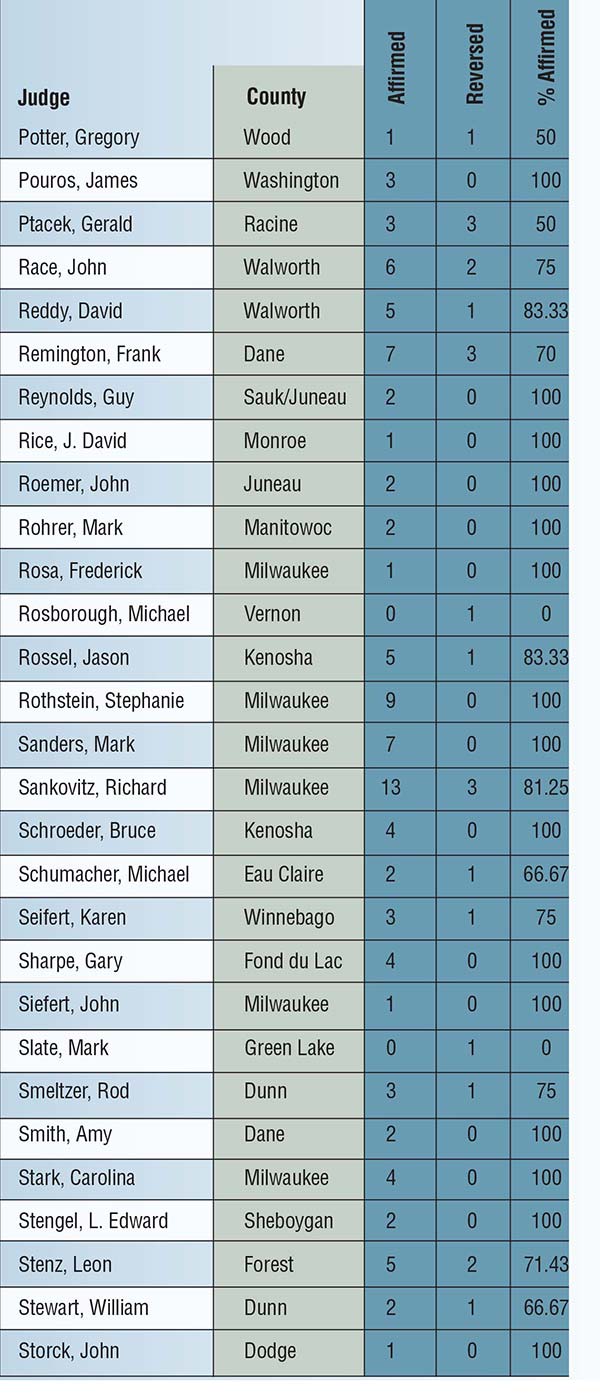
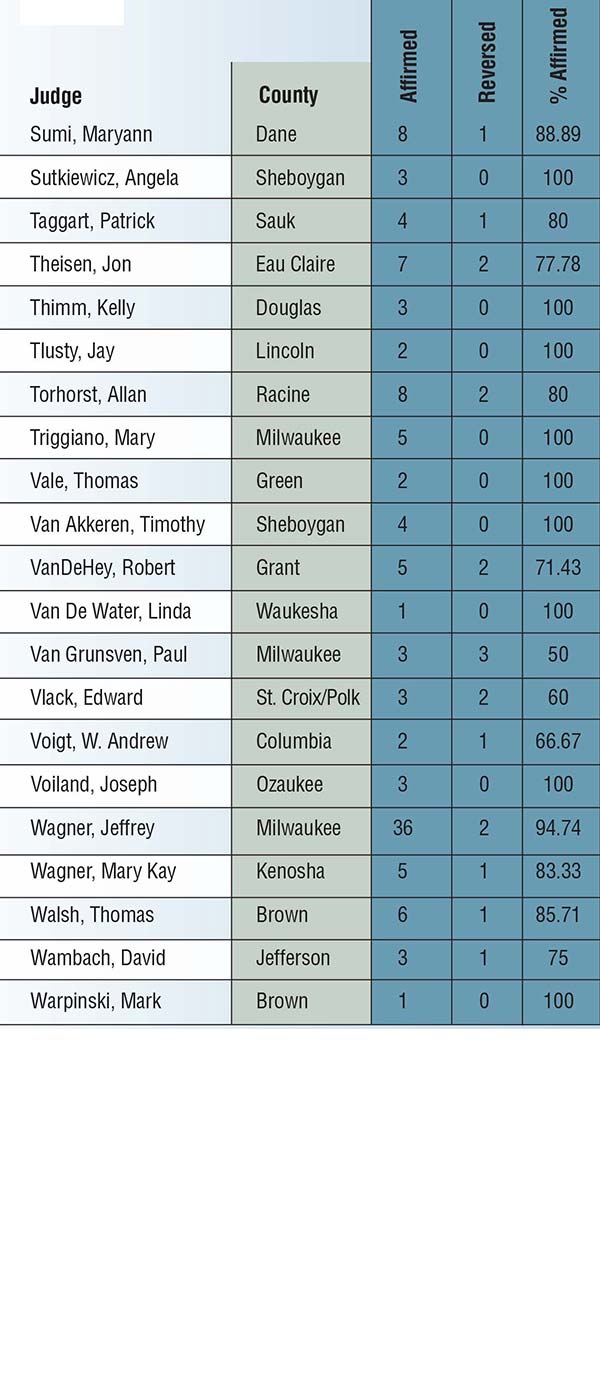
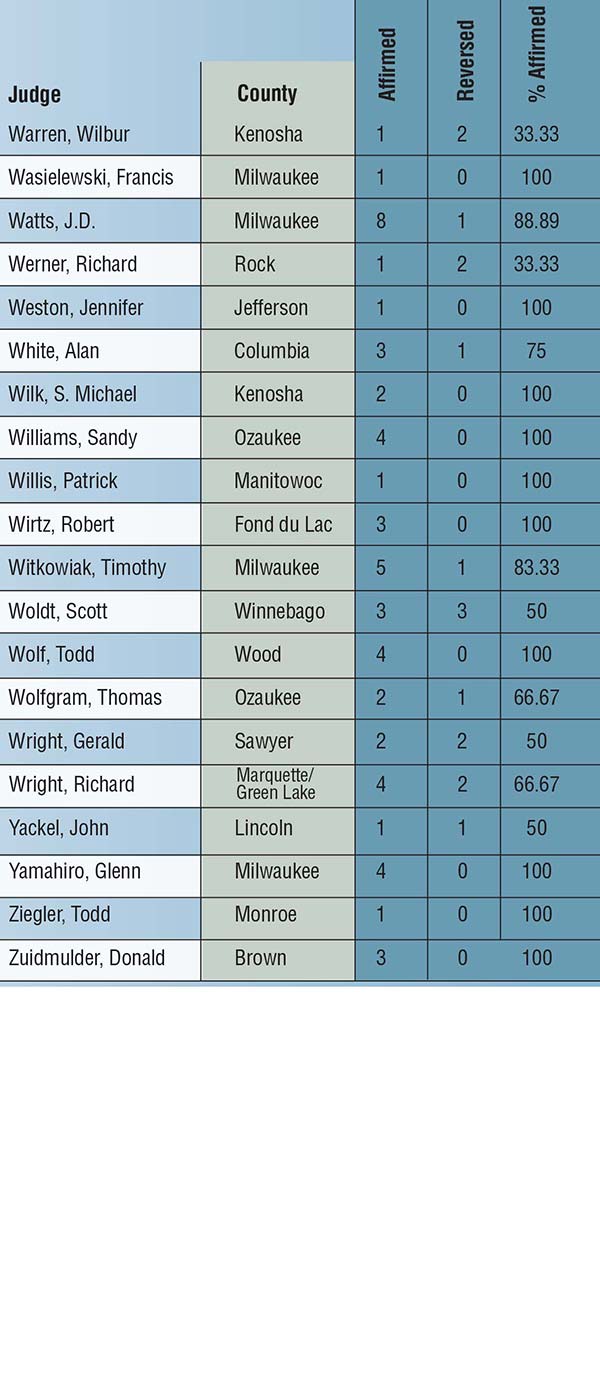
— Wisconsin Law Journal staff member Erika Strebel also contributed to this report.
Legal News
- Wisconsin joins Feds, dozens of states to hold airlines accountable for bad behavior
- Trump ahead of Biden in new Marquette poll
- Bankruptcy court approves Milwaukee Marriott Downtown ‘business as usual’ motion
- New Crime Gun Intelligence Center to launch in Chicago
- Arrest warrant issued for Minocqua Brewing owner who filed Lawsuit against Town of Minocqua
- Wisconsin Supreme Court justices question how much power Legislature should have
- Milwaukee’s Common Council now has the most African Americans, women and openly LGBTQ members ever
- Office of School Safety Provides Behavioral and Threat Assessment Management Training Ahead of 25th Anniversary of Columbine Shooting
- Wisconsin Supreme Court to hear arguments in Democratic governor’s suit against GOP-led Legislature
- Lawsuit asks Wisconsin Supreme Court to strike down governor’s 400-year veto
- Wisconsin man pleads not guilty to neglect in disappearance of boy
- ACS Selects University of Wisconsin Law School’s Miriam Seifter for 2024 Ruth Bader Ginsburg Scholar Award
WLJ People
- Power 30 Personal Injury Attorneys – Russell Nicolet
- Power 30 Personal Injury Attorneys – Benjamin Nicolet
- Power 30 Personal Injury Attorneys – Dustin T. Woehl
- Power 30 Personal Injury Attorneys – Katherine Metzger
- Power 30 Personal Injury Attorneys – Joseph Ryan
- Power 30 Personal Injury Attorneys – James M. Ryan
- Power 30 Personal Injury Attorneys – Dana Wachs
- Power 30 Personal Injury Attorneys – Mark L. Thomsen
- Power 30 Personal Injury Attorneys – Matthew Lein
- Power 30 Personal Injury Attorneys – Jeffrey A. Pitman
- Power 30 Personal Injury Attorneys – William Pemberton
- Power 30 Personal Injury Attorneys – Howard S. Sicula












